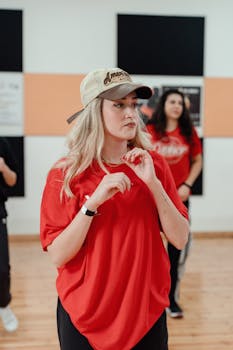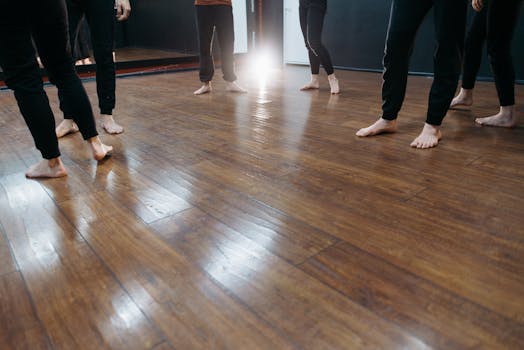The evolution of digital tools has profoundly affected many artistic fields, and dance is no exception. In the United States, technology has intertwined with dance forms, enriching the way dancers create, practice, and perform. As digital tools continue to emerge, their influence on choreography, teaching methods, and audience engagement becomes increasingly significant.
From interactive applications to advanced video editing software, the range of digital tools available to dancers is expansive. These tools serve not only as a means of expression but also as platforms for collaboration and education. As we explore the impact of these innovations, it becomes clear that the digital landscape is reshaping the dance community in ways we could have hardly imagined.
Furthermore, understanding how these digital tools enhance creativity, streamline practice routines, and connect audiences to performances will be essential for future dancers. Let’s delve deeper into the multifaceted impacts of digital tools on dance by examining various aspects of this dynamic relationship.
The Role of Video in Dance Education
Video technology has transformed dance education significantly. Dance instructors now use video to share choreography with students easily. This method allows dancers to learn at their own pace, enhancing accessibility.
Additionally, students can record their performances and receive valuable feedback from instructors. This creates an ongoing dialogue between students and teachers, improving the overall learning experience. Students can revisit lessons and refine their techniques through repeated viewings.
Moreover, video platforms like YouTube provide a wealth of tutorials and performances. Aspiring dancers can learn from the best in the industry without the constraints of geographic location. Online resources democratize access to high-quality dance education.
Furthermore, social media enables dancers to share their work with a broader audience. Dancers can receive instant feedback and encouragement from viewers, fostering a supportive community. This interaction has the potential to inspire dancers creatively.
In sum, the integration of video technology in dance education enhances learning, enables personalization, and cultivates a sense of community. These advancements empower dancers, making education more engaging and effective.
Choreography and Creative Expression
Digital tools have significantly influenced how choreography is developed and presented. Choreographers now use software like DanceForms and LabanWriter to visualize movement before actual rehearsals begin. This innovation allows for precise planning and experimentation.
Moreover, animation and video editing software enable choreographers to create multimedia presentations that blend dance with other art forms. These collaborations can bring an additional layer of storytelling, captivating audiences in novel ways.
Social media platforms also play a role in the choreography process. Dancers often share snippets of their work online, inspiring each other and sparking creative dialogue. This collective exchange catalyzes diverse, innovative choreographic ideas.
The globalization of dance has also been accelerated by digital platforms. Choreographers can now incorporate influences from various cultures without the need for extensive travel. This has broadened the scope of contemporary dance significantly.
Ultimately, digital tools empower choreographers to express themselves more freely and creatively. Through these technologies, the boundaries of traditional choreography continue to expand, fostering a new era in dance innovation.
Enhanced Practice Techniques
Practicing dance requires dedication, and digital tools have made this process more efficient. Dancers can utilize metronome apps and music-editing software to match their movements with tempo and rhythm. This aids in cultivating musicality.
Moreover, wearable technology like fitness trackers allows dancers to monitor their physical exertion and progress. Athletes can use this data to improve endurance and performance, thus enhancing their overall capabilities.
Virtual reality (VR) is also emerging in dance practice, offering immersive environments for dancers. This technology allows dancers to rehearse in various simulated settings, providing fresh perspectives on their work.
Additionally, dancers can connect with each other through collaborative platforms, regardless of their location. This connectivity encourages shared practice, adding variety and motivation. It expands the traditional practice space and paves the way for new networking opportunities.
In conclusion, digital tools have streamlined and enhanced practice techniques, allowing dancers to explore their artistry while maintaining efficiency. These advancements are vital for helping dancers achieve their full potential.
Embracing Social Media for Promotion
Social media platforms have become essential tools for dancers and dance companies to promote their work. Artists can showcase their talent through platforms like Instagram and TikTok, reaching large audiences instantly. This gives them a direct connection to potential fans.
Moreover, promotional strategies have evolved with digital marketing. Dancers can now create eye-catching videos, behind-the-scenes content, and interactive posts to engage viewers. This helps build a personal brand that resonates with their audience.
Additionally, social media opens opportunities for partnerships and sponsorships. Brands often collaborate with influencers, bringing financial support and increased visibility to their projects. These alliances can enhance the dancer’s profile significantly.
Furthermore, live streaming performances on platforms like Facebook Live allows dancers to reach audiences worldwide. By eliminating geographical barriers, dancers can cultivate a global following. This accessibility broadens the audience for live performances.
Overall, embracing social media for promotion is critical in today’s dance landscape. It empowers dancers to take control of their careers while engaging meaningfully with their audiences.
The Impact of Digital Innovations on Dance Performances
Digital innovations have transformed the stage for dance performances, enriching the viewer’s experience. Automated lighting and sound systems allow for seamless integration of technology into live performances. Such elements enhance the overall atmosphere.
Projection mapping is another cutting-edge trend. Dancers can now perform against vibrant digital backdrops that interact with their movements, creating mesmerizing visual narratives. This artistic fusion captivates audiences and elevates the storytelling aspect of performances.
Moreover, augmented reality (AR) is finding its way into dance. Through AR devices, audiences can engage with performances interactively, heightening their connection to the art form. This experiential approach fosters a deeper emotional response.
Streaming services now offer on-demand dance performances, making shows accessible to anyone with an internet connection. This evolution challenges traditional notions of theater attendance, expanding opportunities for audiences to engage with dance.
In sum, digital innovations are revolutionizing dance performances, enhancing visual storytelling, audience engagement, and accessibility. As technology continues to advance, the possibilities for dance expression are endless.
Collaboration Across Disciplines
Digital tools facilitate creative collaborations across diverse artistic disciplines. Dance is increasingly merging with film, visual arts, and music, resulting in unique cross-disciplinary projects. This trend fosters innovation and creativity in all involved fields.
Filmmakers often collaborate with choreographers to create visually stunning dance videos. The blend of dance and cinema allows for innovative storytelling and the exploration of new artistic concepts. This partnership enhances both mediums considerably.
Moreover, digital platforms provide a framework for collaborative art projects. Artists from different backgrounds can come together online, sharing ideas and creating meaningful work regardless of physical proximity. Digital collaboration encourages diverse perspectives.
In addition, the development and use of applications have enabled community-driven projects. Dancers can engage with local communities, showcasing their art in ways that resonate culturally. This inclusivity builds bridges and fosters understanding.
Ultimately, the collaboration between dance and other artistic disciplines enriches the creative landscape. These partnerships nurture creativity and expand the boundaries of what dance can become.
Conclusion
The impact of digital tools on dance is profound and multifaceted, influencing education, choreography, performance, and community engagement. Through advancements in technology, dancers can connect, create, and innovate like never before.
As we look toward the future, the continued evolution of these digital tools will ensure that dance remains a dynamic and relevant art form. Embracing these technologies will deepen connections within the dance community and with audiences worldwide.
Ultimately, the fusion of digital tools and dance presents exciting opportunities to explore artistic expression and enhance creative collaboration. The era of digital dance is just beginning, and the possibilities are indeed endless.


